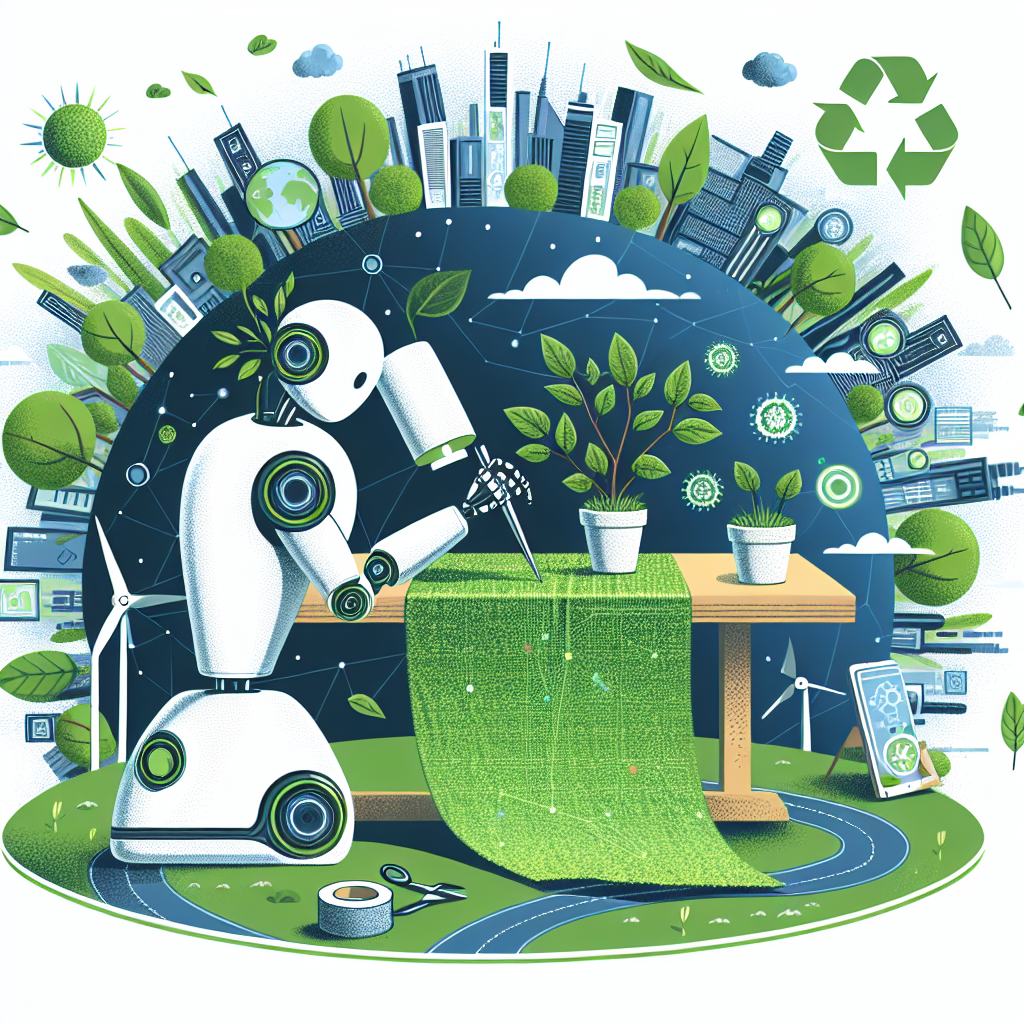Sustainable fashion has become a major focus in the industry in recent years, as consumers become more aware of the environmental and social impact of the clothing they wear. With the rise of fast fashion and its negative consequences on the planet, many brands and designers are now looking for ways to create clothing that is both stylish and sustainable. One of the most promising technologies that is revolutionizing the fashion industry is artificial intelligence (AI). In this article, we will explore how AI is changing the way fashion is produced, consumed, and recycled, and how it is helping to create a more sustainable future for the industry.
AI in Design
One of the most exciting applications of AI in the fashion industry is in the design process. AI algorithms can analyze data from social media, fashion trends, and consumer preferences to create new designs that are on-trend and in-demand. This can help designers to create clothing that is more likely to sell, reducing waste and overproduction.
AI can also help designers to optimize their designs for sustainability. By analyzing the environmental impact of different materials, production processes, and transportation methods, AI can help designers to choose the most sustainable options for their clothing. This can help to reduce the carbon footprint of the fashion industry and minimize waste and pollution.
AI in Production
AI is also revolutionizing the production process in the fashion industry. By using AI-powered robots and machines, manufacturers can automate many of the production tasks that were previously done by hand. This can help to speed up the production process, reduce labor costs, and improve the quality of the clothing.
AI can also help manufacturers to optimize their production processes for sustainability. By analyzing data on energy consumption, water usage, and waste production, AI can help manufacturers to identify areas where they can reduce their environmental impact. This can help to create a more sustainable supply chain and reduce the carbon footprint of the fashion industry.
AI in Retail
AI is also changing the way that clothing is sold and consumed. AI-powered algorithms can analyze data on consumer preferences, shopping habits, and body measurements to create personalized recommendations for shoppers. This can help to reduce the number of clothing items that are returned, reducing waste and improving the shopping experience for consumers.
AI can also help retailers to optimize their inventory management and supply chain. By analyzing data on sales trends, weather patterns, and consumer behavior, AI can help retailers to predict demand and adjust their inventory levels accordingly. This can help to reduce overstocking and markdowns, reducing waste and improving profitability.
AI in Recycling
One of the biggest challenges in the fashion industry is the recycling and disposal of clothing. AI is now being used to create new solutions for recycling clothing and reducing waste. By using AI-powered robots and machines, manufacturers can automate the process of disassembling and sorting clothing for recycling. This can help to increase the efficiency of the recycling process and reduce the amount of clothing that ends up in landfills.
AI can also help to create new ways to recycle clothing. By using AI algorithms to analyze the composition of different fabrics and materials, researchers can develop new techniques for recycling clothing into new garments. This can help to reduce the demand for new materials and reduce the environmental impact of the fashion industry.
FAQs
1. How is AI being used in sustainable fashion?
AI is being used in sustainable fashion in a variety of ways, including in the design process, production process, retail, and recycling. AI algorithms can analyze data on consumer preferences, fashion trends, and environmental impact to create more sustainable designs, optimize production processes, personalize the shopping experience, and develop new recycling techniques.
2. What are the benefits of AI in sustainable fashion?
The benefits of AI in sustainable fashion include reducing waste and overproduction, improving the efficiency and quality of clothing production, creating personalized shopping experiences, and developing new recycling techniques. AI can help to create a more sustainable fashion industry that is better for the planet and for consumers.
3. Are there any drawbacks to using AI in sustainable fashion?
There are some potential drawbacks to using AI in sustainable fashion, including concerns about data privacy, job displacement, and the environmental impact of AI technologies. It is important for designers, manufacturers, and retailers to carefully consider the ethical and environmental implications of using AI in the fashion industry.
4. How can consumers support sustainable fashion?
Consumers can support sustainable fashion by buying clothing from brands that prioritize sustainability, recycling their clothing, and advocating for more sustainable practices in the fashion industry. By making informed choices about the clothing they buy and wear, consumers can help to create a more sustainable future for the fashion industry.
In conclusion, AI is revolutionizing the fashion industry and helping to create a more sustainable future for the industry. By using AI in the design process, production process, retail, and recycling, designers, manufacturers, and retailers can create clothing that is stylish, sustainable, and better for the planet. With the continued development of AI technologies, the fashion industry is poised to make significant strides towards a more sustainable future.

